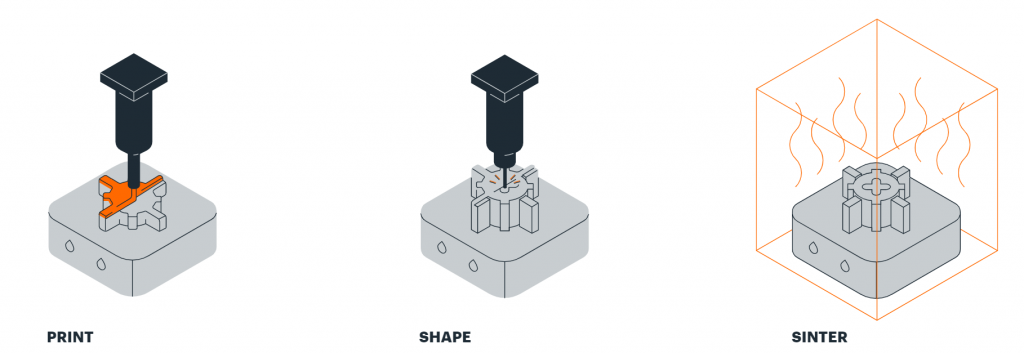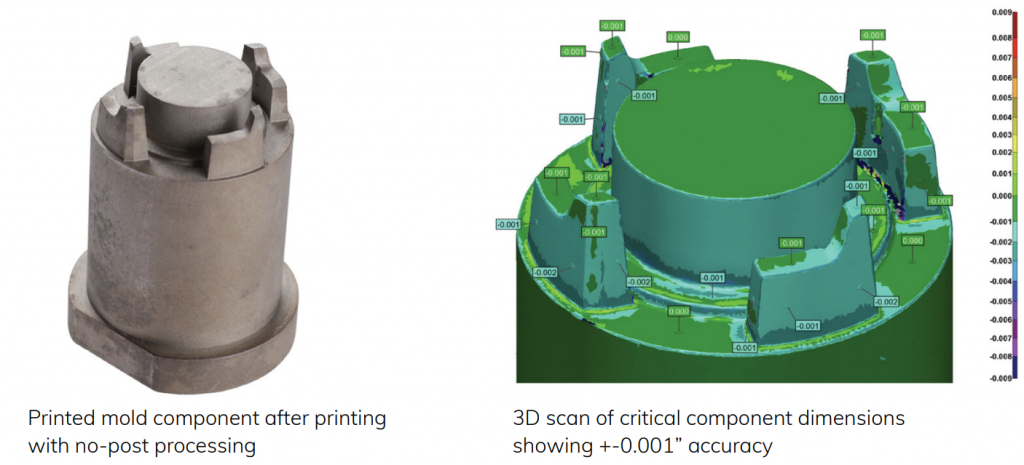Up-and-coming metal 3D printer manufacturer Mantle has come out of stealth with $13M in funding.
Backed by several investors including Foundation Capital, Hypertherm Ventures, Future Shape, 11.2 capital, Plug and Play Ventures and Corazon Capital, the Bay Area-based company has debuted its hybrid TrueShape technology. The process combines metal extrusion with subtractive milling in a bid to reduce manufacturing costs and lead times, all while increasing the surface quality of its 3D printed parts.
Mantle is targeting the $45 billion manufacturing tooling market, revealing cosmetics company L’Oréal as its first industrial partner. L’Oréal will be using the TrueShape 3D printing process to fabricate precision molds for its product packaging.
Ted Sorom, CEO and co-founder of Mantle, said, “Manufacturers require proven part quality and performance. By using Mantle printed tooling, they can continue to use the same high-performance thermoplastics and get parts of equivalent or superior quality in less time and at a lower cost. We help companies speed their products to market with dramatically faster new product introductions while leveraging their proven mass production expertise.”

How does TrueShape 3D printing work?
The hybrid TrueShape process can be broken down into three key stages. It is ultimately designed to encapsulate the entire end-to-end workflow for precision metal part production. First comes printing, where the system 3D prints a ‘rough part geometry’ using one of the company’s proprietary Flowable Metal Paste materials.
Much like the filaments a Markforged or Desktop Metal FFF 3D printer might use, the Flowable Metal Paste materials incorporate metal particles in a polymer matrix. This provides consistency, which ensures printability. The current paste offering is two-strong, and includes P2X, a P20 tool steel-like metal with improved corrosion and abrasion resistance. H13, on the other hand, is a standard H13 tool steel that can be hardened to at least 50 Rockwell C.
Once extruded, the part is further shaped using a high-speed milling toolhead integrated into the machine itself. This step improves the dimensional precision of the component while leaving a high-quality surface finish. Finally, the part is sintered in a furnace, which debinds the polymer from the metal particles and fuses the metal into a dense, solid component.

A new path to precision tooling
Mantle’s technology has already been used by an unnamed global appliance manufacturer to 3D print a special tool insert, enabling the molding of over 200,000 washing machine parts. The project reportedly resulted in cost savings of 67% and lead time reductions of around 70% for the company. Furthermore, an unnamed medical device manufacturer was able to cut its manufacturing costs by 50% and lead times by 80% in a similar production project.
“Mantle is taking on the overlooked $45 billion tooling market that is a bottleneck for innovation because it is a slow process that has not changed significantly in 70 years,” explained Steve Vassallo, General Partner at Foundation Capital. “Until Mantle, no one has been able to develop tooling tech that is disruptive in either time or cost, let alone both, which made backing Mantle an easy decision for us.”
While tooling is the first step for Mantle, the company also intends to penetrate the $300 billion precision parts market further down the line, as well as the spare parts sector and low-volume industrial machinery.

With its surprise launch, Mantle is the latest competitor in the extrusion-based metal 3D printing market. Just yesterday, rival OEM Markforged announced an agreement to merge with blank check company one, enabling Markforged to go public on the New York Stock Exchange. When complete in summer 2021, the move will result in a company valuation of $2.1 billion.
One of the other major players in the sector is Desktop Metal, which launched its Studio System 2 metal 3D printer earlier this month. Powered by the company’s proprietary Bound Metal Deposition (BMD) process, the new System 2 is an office-friendly machine based on the previously released Studio System+. Featuring two quick-release print heads, the machine packs a build volume measuring 300 x 200 x 200mm.
Subscribe to the 3D Printing Industry newsletter for the latest news in additive manufacturing. You can also stay connected by following us on Twitter and liking us on Facebook.
Looking for a career in additive manufacturing? Visit 3D Printing Jobs for a selection of roles in the industry.
Featured image shows the build plate of the Mantle 3D printer. Image via Mantle.



